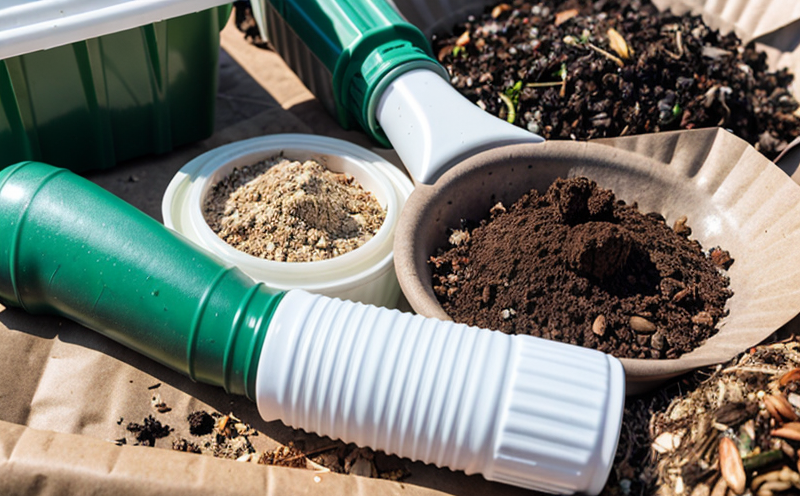EN 13677 Cobalt in Organic Waste
The European Standard EN 13677:2004 specifies the determination of cobalt content in organic waste materials, particularly those intended for composting. This test is critical for ensuring compliance with environmental regulations and quality standards, which are designed to protect soil health and prevent contamination from heavy metals like cobalt.
The process involves several key steps starting with the collection and preparation of representative samples of the organic waste material. These samples should be homogenized to ensure accurate analysis. The choice of sample size is dependent on the expected concentration levels and the variability within the batch, but generally, a minimum of 50 g per sample is recommended for most testing purposes.
The test protocol outlined in EN 13677 involves digestion of the samples followed by instrumental analysis using atomic absorption spectrophotometry (AAS) or inductively coupled plasma optical emission spectroscopy (ICPOES). These methods provide precise and accurate measurements of cobalt levels, which are then compared against specified limits set forth in the standard.
Compliance with this test is essential for manufacturers and suppliers who aim to produce certified composting materials. The results not only ensure environmental friendliness but also enhance consumer confidence by demonstrating adherence to stringent quality control measures.
In addition to its regulatory significance, this testing ensures that products meet the demands of modern organic waste management practices. By identifying potential sources of contamination early in the supply chain, businesses can mitigate risks and improve overall product sustainability.
The application of EN 13677 is particularly relevant for sectors dealing with organic waste such as agricultural inputs, biodegradable packaging manufacturers, and municipal solid waste processors. Understanding cobalt levels helps these industries manage their raw materials effectively, ensuring that final products are safe for use in composting processes.
For R&D engineers involved in developing new formulations or improving existing ones, this test offers valuable insights into the behavior of cobalt during decomposition and transformation stages. This knowledge can be used to adjust formulas to minimize unwanted elements while enhancing beneficial properties like nutrient availability.
Applied Standards
- EN 13677:2004 Determination of cobalt content in organic waste materials intended for composting.
This standard has been widely adopted across Europe and beyond due to its rigorous approach to measuring cobalt concentrations. Compliance with EN 13677 ensures that products meet stringent environmental protection requirements, thereby facilitating easier market entry into countries where such regulations are enforced.
The standard covers various types of organic waste including agricultural residues, garden waste, food scraps, and other biodegradable materials commonly used in composting. It specifies the sampling techniques, preparation methods, analytical procedures, and reporting formats necessary for accurate determination of cobalt content.
Benefits
- Regulatory Compliance: Ensures adherence to international standards for organic waste management.
- Enhanced Quality Control: Identifies and mitigates potential risks associated with heavy metal contamination in compost products.
- Environmental Protection: Helps maintain soil health by avoiding harmful substances from entering the ecosystem through improperly treated organic matter.
- Consumer Trust: Builds confidence among buyers who seek environmentally responsible products for their gardens or agricultural operations.
Why Choose This Test
Selecting the appropriate testing method is crucial when dealing with organic waste materials, especially those destined for composting. EN 13677 offers several advantages over other potential tests:
- Rigorous Methodology: The standardized procedure ensures consistent and reliable results.
- International Recognition: Widely accepted across Europe, making it easier to comply with local regulations.
- Comprehensive Coverage: Addresses both raw materials and finished compost products, providing a holistic view of cobalt presence throughout the lifecycle of organic waste.
The precision and accuracy offered by EN 13677 make it an indispensable tool for quality assurance professionals, research & development teams, and procurement departments within organizations operating in sectors related to organic waste management. By leveraging this test, stakeholders can ensure they are meeting regulatory requirements while also promoting sustainable practices that benefit both the environment and business operations.





